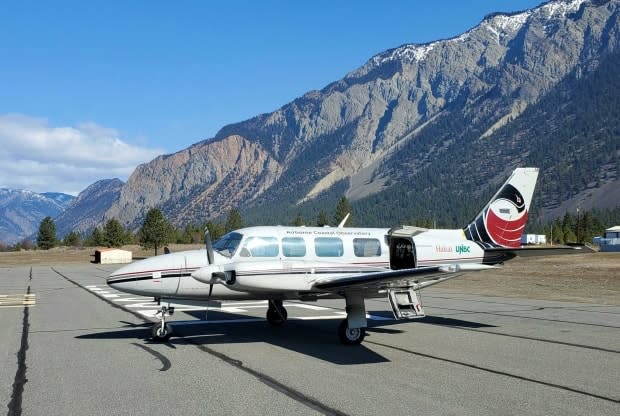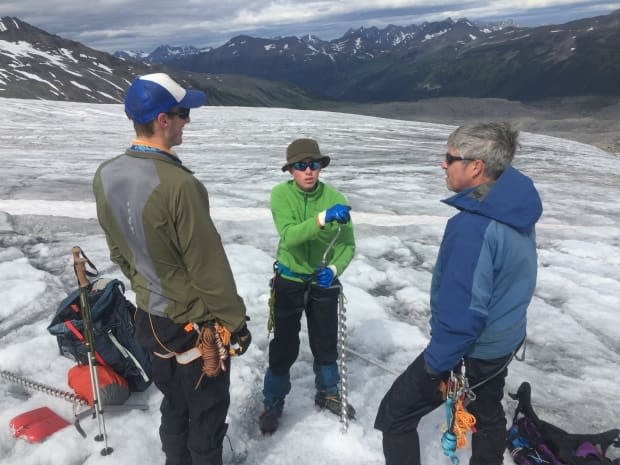Alberta glacier suffered record melt this year — but researchers suggest it will get worse

The Saskatchewan Glacier in Banff National Park melted by more than 10 metres in the past year, researchers say.
"It clearly is the most extreme melt that we've seen," said Brian Menounos, glaciologist at the University of Northern British Columbia, while on CBC Edmonton's Radio Active.
The Saskatchewan Glacier, which drapes the B.C. and Alberta border, is one of over 400 glaciers in western Canada that have been surveyed twice per year since 2017.
Researchers use lasers, that are mounted onto planes, to measure changes in the glacier's thickness and elevation twice per year.

Melting this summer even surpassed observational records that, Menounos says, date back much longer.
The rapid melting was caused, in part, by the early heatwave in June. Temperatures in the Canadian Rockies soared above 40 C, and coincided with the summer solstice and the longest days of the year, so there was less time for temperatures to drop.
Soot and wildfire smoke were also factors. They darkened the glacier's surface, leading it to absorb more heat from the sun's rays, said Menounos.
As less seasonal snow falls, glaciers are expected to recede faster because more ice will be exposed to the sun, which will accelerate melting, said Martin Sharp, glaciologist at the University of Alberta.
"Solar radiation is extremely effective at melting snow and ice and converting it to water," he said.
The Saskatchewan Glacier will be mostly gone by the end of the century, Menounos said.
That has consequences for humans and animals alike.

The Saskatchewan Glacier is the headwaters of the North Saskatchewan River, which flows through Alberta and supplies many communities with drinking water, including Edmonton.
Approximately one in four people living in Alberta will experience water shortages due to melting glaciers, according to a University of British Columbia study published last year.
The North Saskatchewan River is mainly fed by seasonal snow. But the glacier acts as a water reservoir, supplying cold water and providing a thermal buffer zone for aquatic ecosystems. This allows species like cold water fish, for example, to survive, Menounos explained.
LISTEN | Thinning Glaciers:

